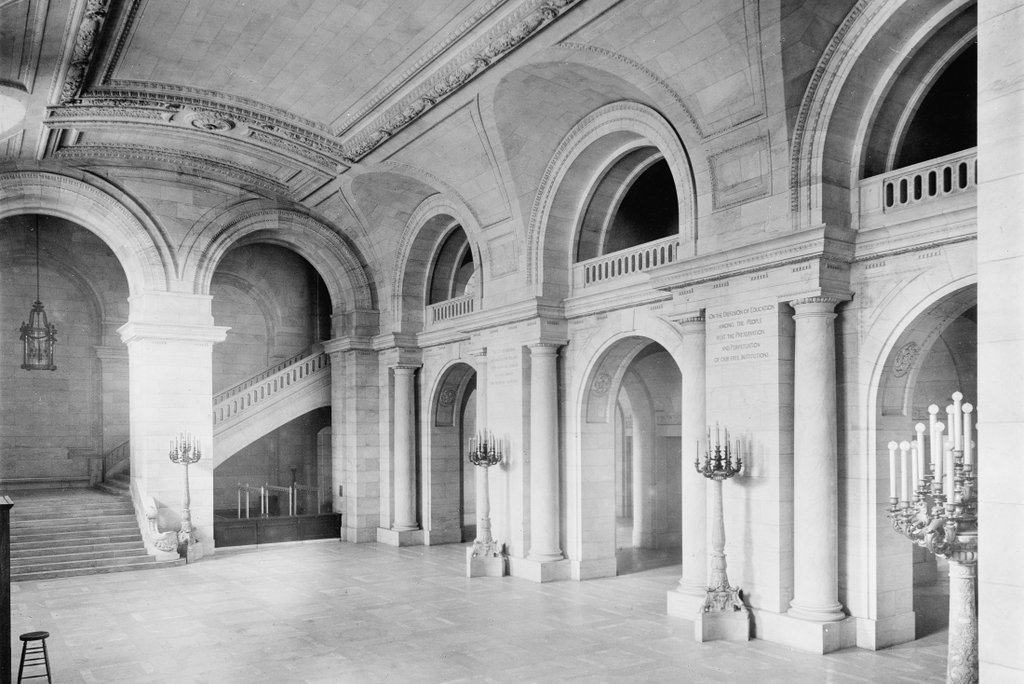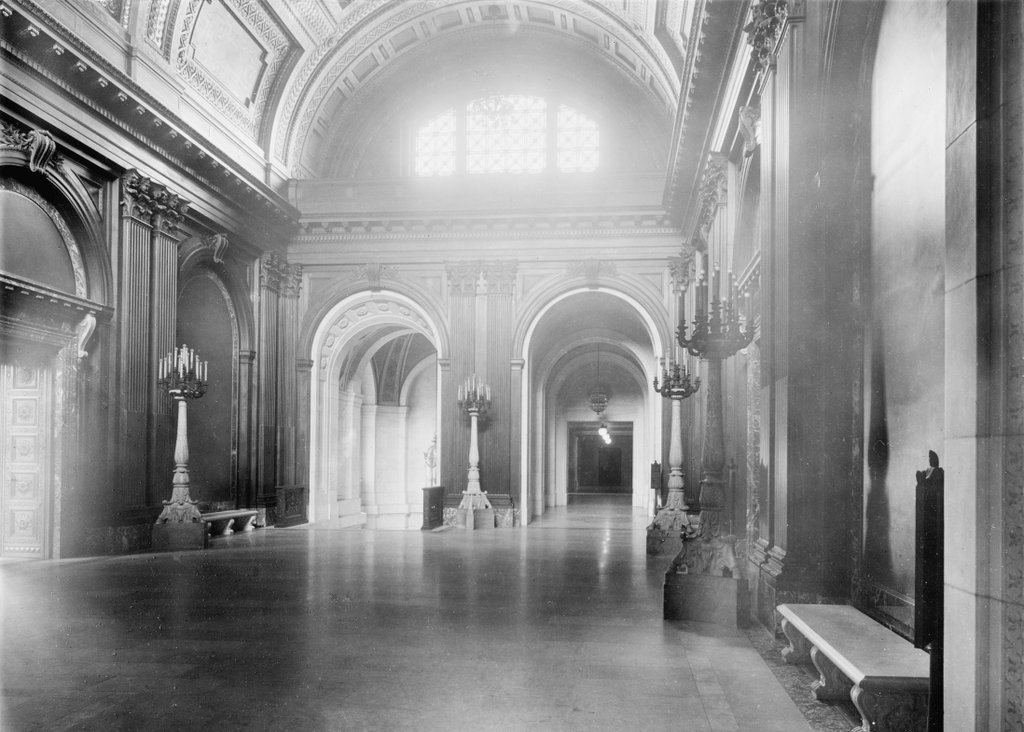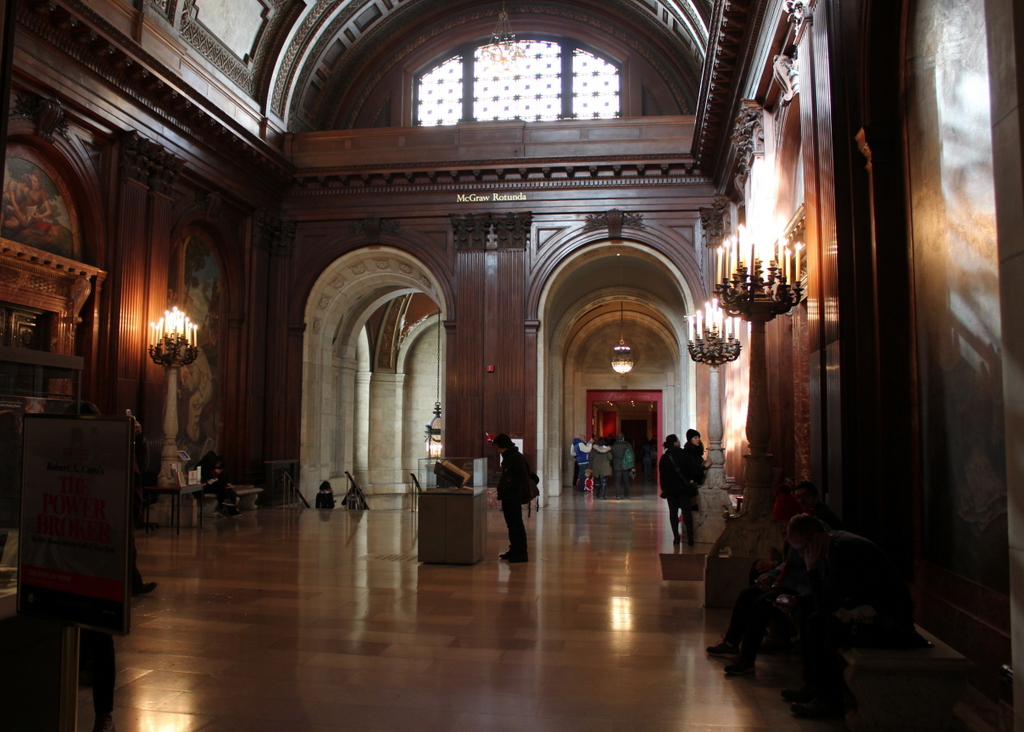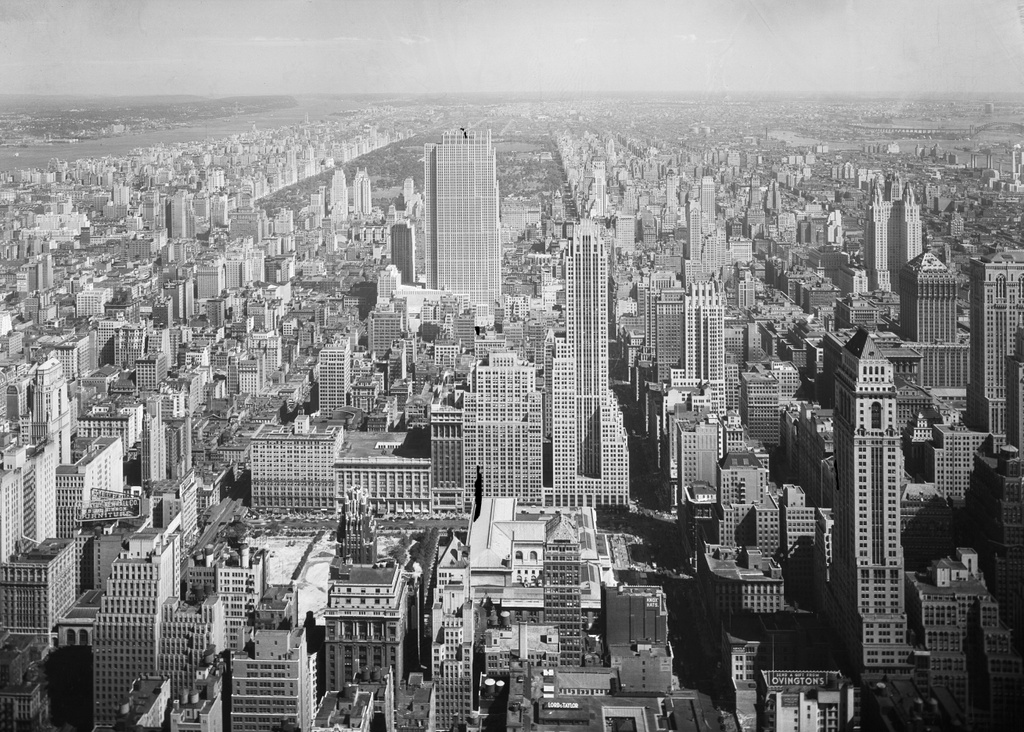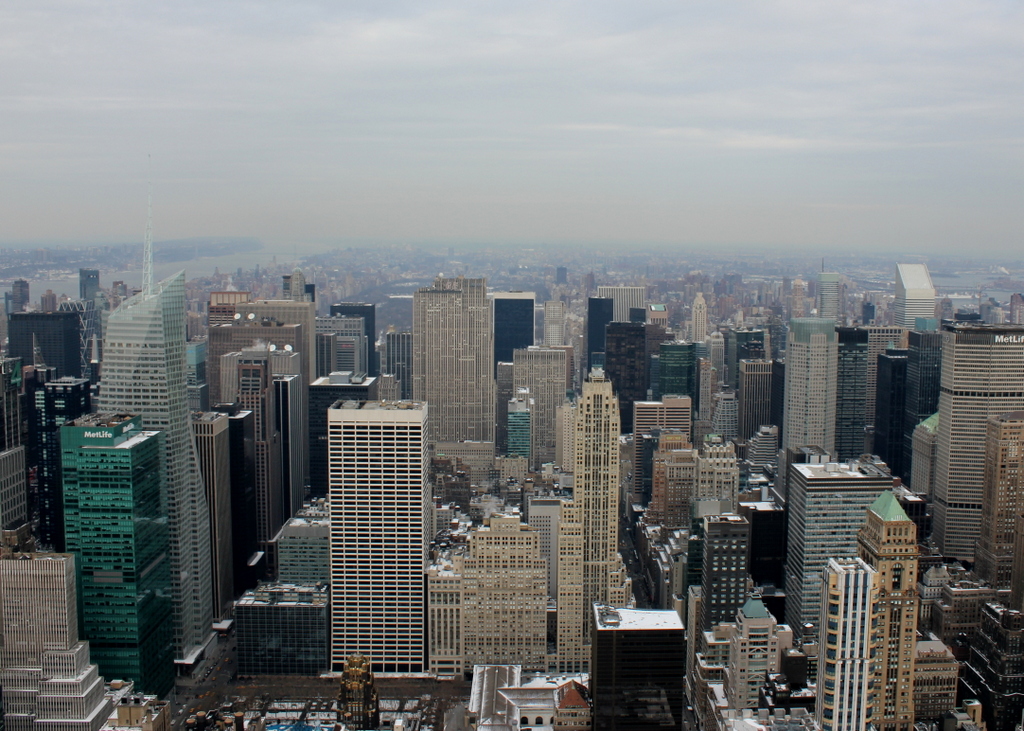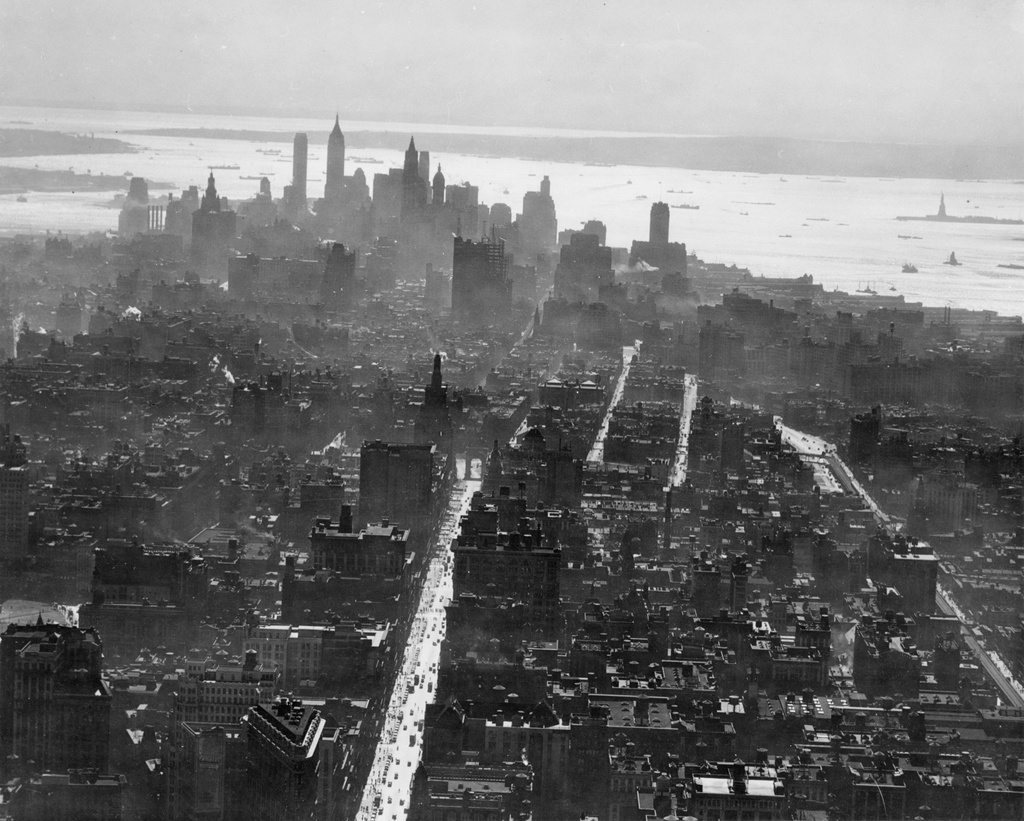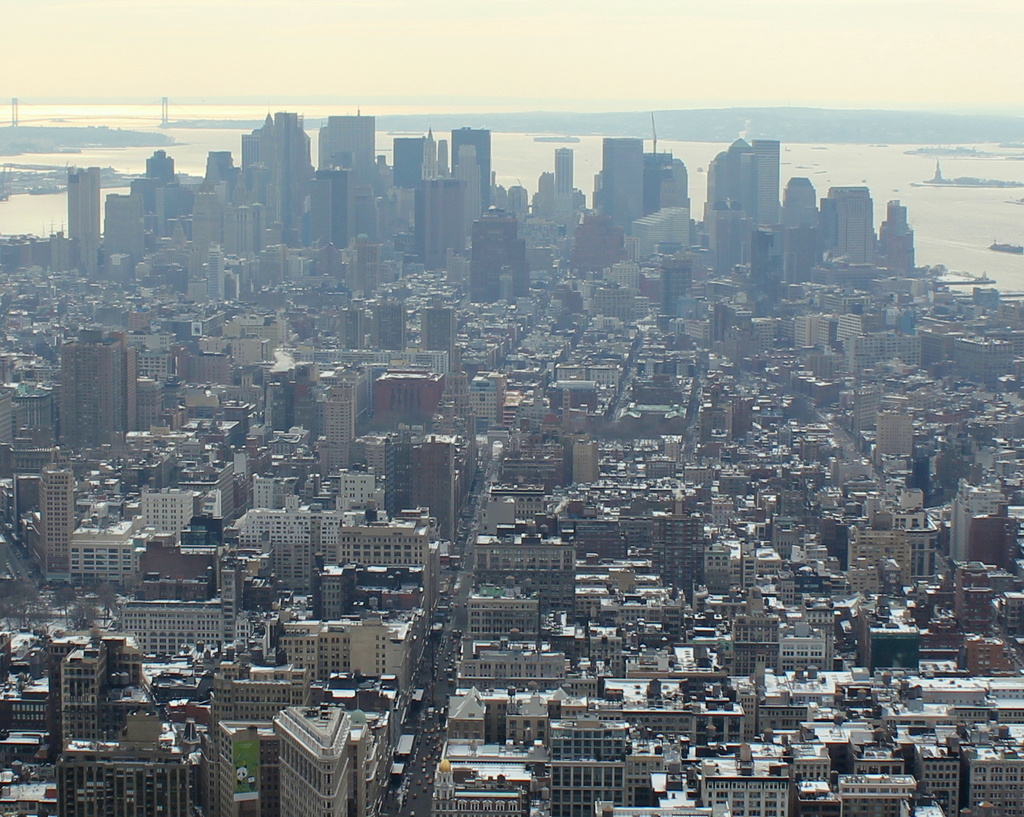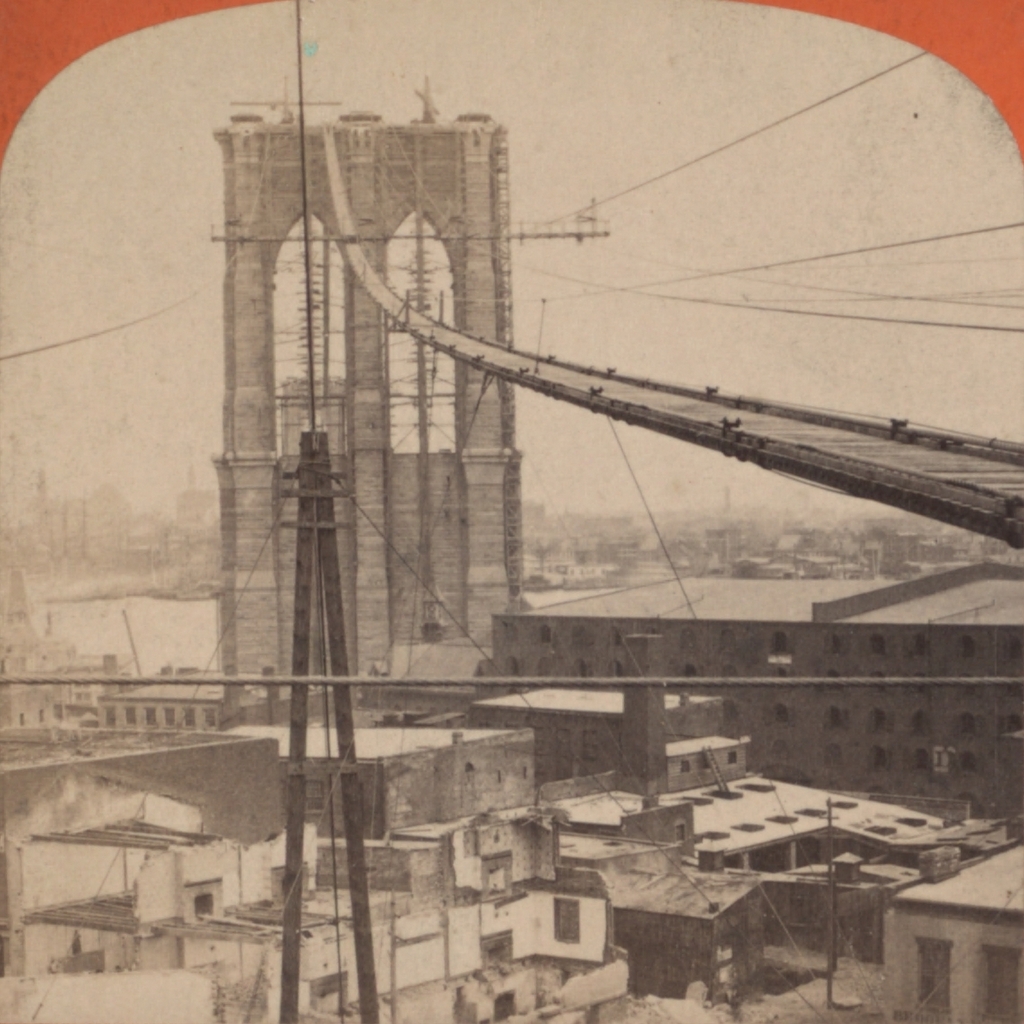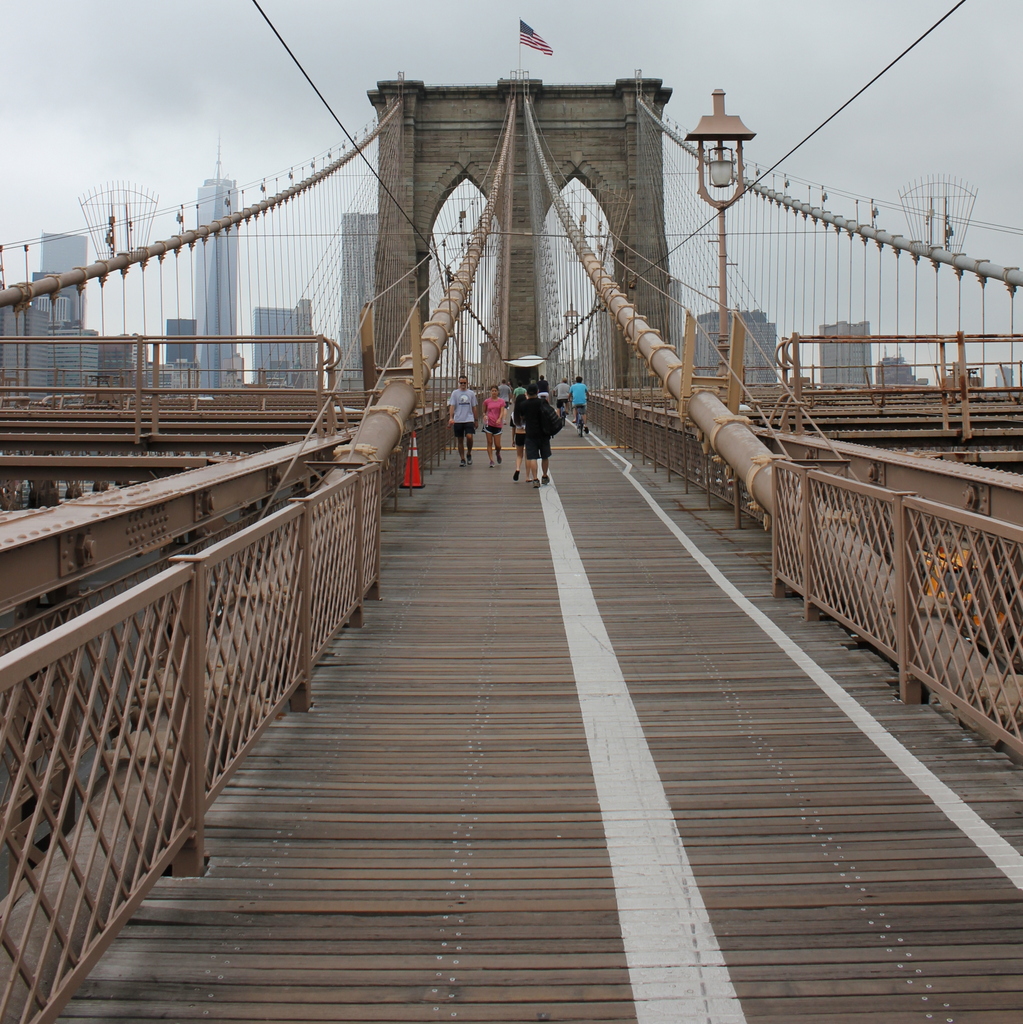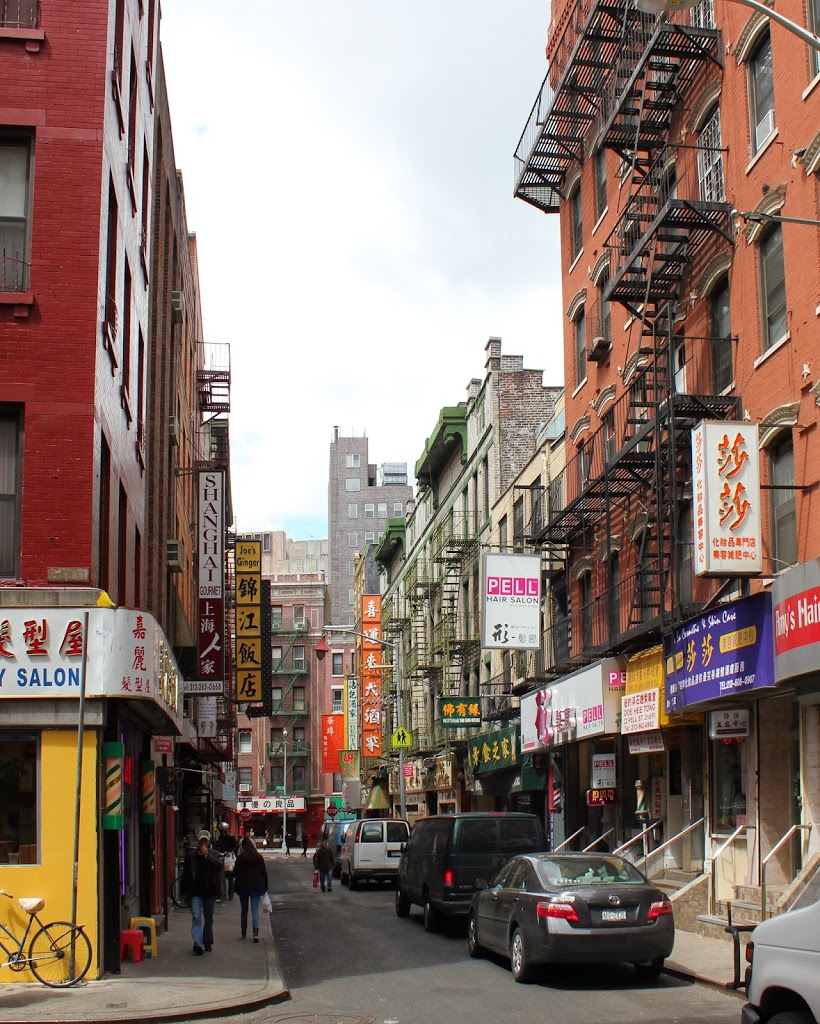Astor Hall, at the entrance to the main branch of the New York Public Library, around 1911-1920. Image courtesy of the Library of Congress, Detroit Publishing Company Collection.
The scene in 2016:
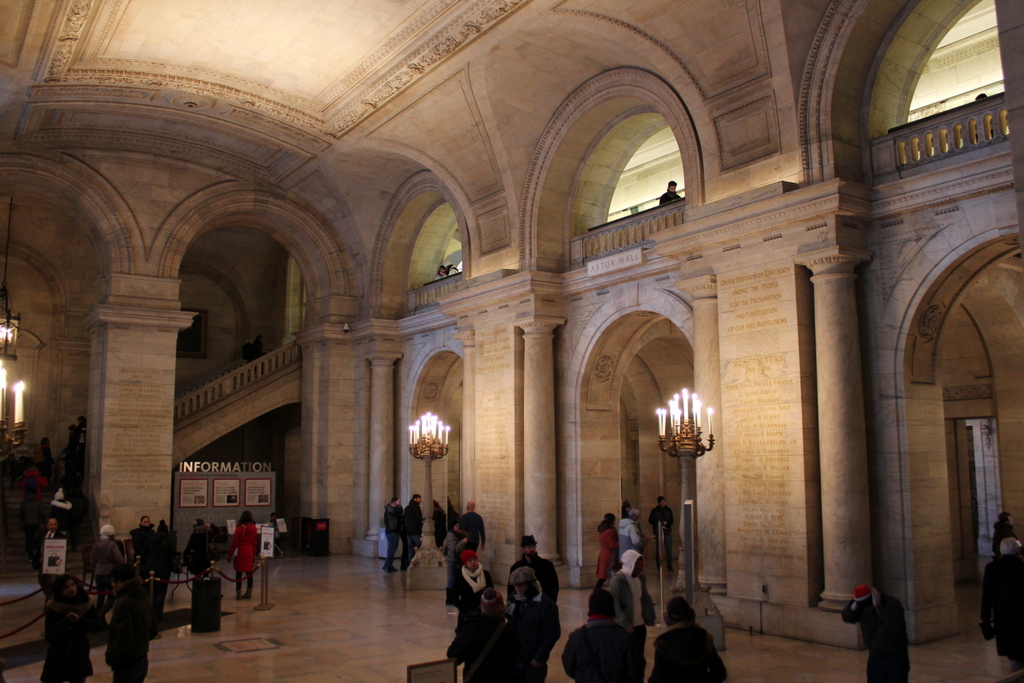
Like the photo McGraw Rotunda in the previous post, this early photo of Astor Hall was probably taken around the time that the main branch of the New York Public Library opened in 1911. This marble entryway is named for the prominent Astor family. Upon his death in 1848, John Jacob Astor, the family patriarch, left funds to establish the Astor Library, a free public library that was later merged to form the New York Public Library system in 1895. The present-day main branch was built several years later, and not much has changed in this scene in the century since the first photo was taken, but the marble walls now bear the names of various benefactors of the library, including, appropriately, several generations of the Astor family at the top of the list.

